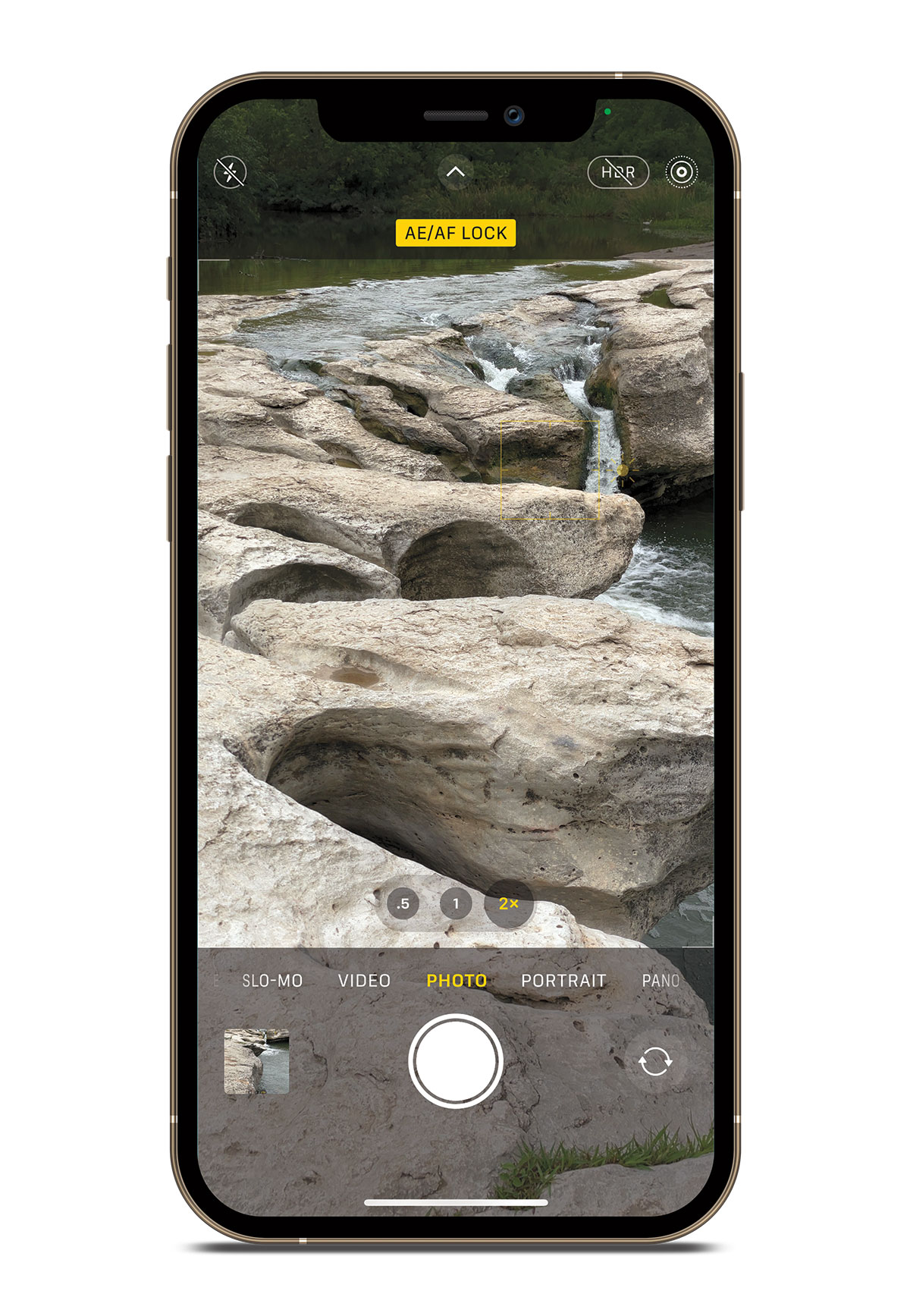
Picture This
Shoot like an iPro
How to get the most out of that new iPhone camera.
This spring, I upgraded my iPhone to a 12 Pro. With those three lenses and impressive reviews, I thought this phone camera would solve all my photography problems.
To my disappointment, there wasn’t a miraculous boost in the quality of my photos with my new phone, so Photo Editor Sonja Sommerfeld helped me out with some lessons and pro tips.
What are those three lenses?
How do you use them?
The three lenses are separate cameras you can access manually, or you can switch between them seamlessly by zooming in or out.
The ultrawide camera (labeled .5X) with a 120-degree view and 13mm equivalent focal length, is best used for landscapes and taking wider pictures without physically moving back from the subject. This camera will distort the image on the edges of the frame while enlarging the portion at the center. With no built-in stabilization, getting a good shot in low light may mean bracing it against something.
The wide camera (1X, 26mm equivalent) has a faster shutter speed and built-in stabilization, so it’s particularly handy for shooting subjects in motion. This camera has a 100-degree view with only minor distortion.
The telephoto camera (2X, 52mm equivalent) has the same large aperture and allows more depth of field. This is a go-to camera for portraiture.
There’s a zoom, too, right?
The iPhone 12 Pro includes a 10X digital zoom that can be controlled either through the camera’s settings or by “pinching out” on the screen. The digital zoom crops out the edges of the photo to make the center of the image — presumably your subject — appear larger. Because of this, image quality is reduced in comparison with the original.

Any focusing tips?
Just tap on your screen where you want the point of focus in your shot. A yellow outlined square defines your focal point. If you don’t do this, your camera will pick something roughly in the middle of the frame and depth of field to focus on automatically.

What about portrait mode? How do I control this manually?
The answer is depth of field. Once in portrait mode, tap on the yellow F inside a circle to open a slider at the bottom of your screen. A higher number gives longer depth of field and less blurring of the background.

How do I make the best use of lighting provided by the iPhone?
Leave off the flash entirely
because it’s too harsh. Instead, use
the light meter.
After you set your focal point by tapping on the screen, you’ll see a sun icon. That is the light meter. Swipe up or down on the icon to control the lighting of your photo. Adjusting the light meter can slow down the shutter speed, so it isn’t recommended for motion shots.

My hands aren’t very steady. Is that what’s making my photos blurry?
The way you release the shutter makes a difference. In addition to the on-screen shutter (round white button), the “volume up” button on the side of the phone also clicks the shutter. You can also brace the iPhone against a stationary object or set the timer on a three-second release. Several after-market remote Bluetooth shutter releases allow you to take a photo without holding your phone.
What is HDR?
HDR is high dynamic range. It’s a setting that takes multiple shots, usually a minimum of three, in high-contrast situations, then layers them over each other to create a single image with lighter shadows and highlights that aren’t blown out. With motion shots or small subjects, however, it can create blurring.

